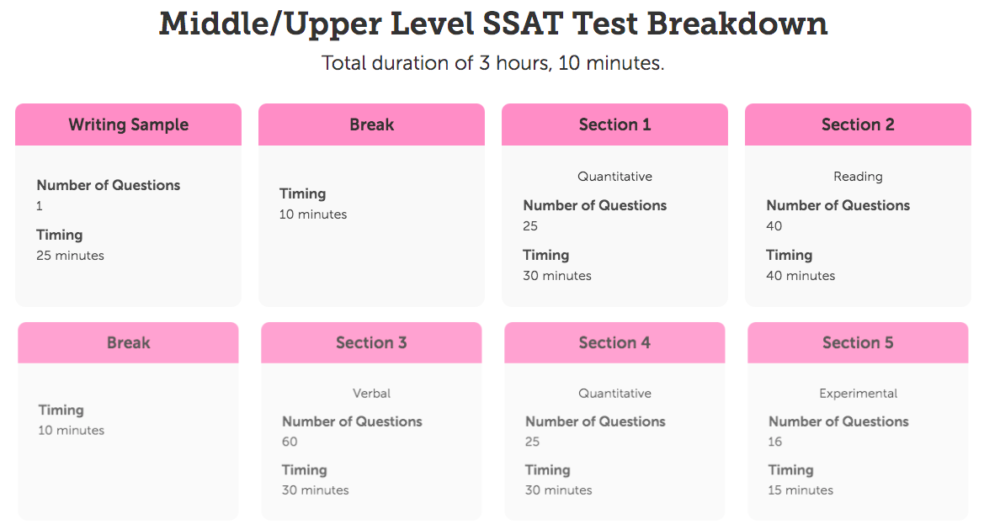Examination Process

Your Guide to Paper-based SSAT https://www.ssat.org/testing/paper/guide-to-the-paper-based-ssat
Your Guide to Computer-based SSAT https://www.ssat.org/testing/prometric/overview
Your Guide to At-home Computer-based SSAT https://www.ssat.org/testing/home/overview
Middle-level SSAT Test Format and Content https://www.ssat.org/pages/middle-level
Upper-level SSAT Test Format and Content https://www.ssat.org/pages/upper-level
10 Tips for Doing Your Best on the SSAT
- Practice, practice, practice – early!
The SSAT is just like other standardized tests: if you practice, you will feel more confident that you’ll do well. Sign up for SSAT Practice Online at least a couple of months before you plan to take the test (your subscription lasts a full year, so the earlier the better!) or purchase the printed Official Guide to the SSAT.
- Read – a lot!
The best way to build your vocabulary and get a better sense for the meanings of unfamiliar words is to see them in the context of other words.
- If you know you are weak in a particular subject, get help before you take the test.
If you know that math is your weakest subject, make sure you address it as soon as possible. Begin early and practice every day until your skills improve. SSAT Practice Online contains full length timed practice tests, quizzes, and indicators designed to show you where your strengths and weaknesses are.
- Be prepared.
The night before the test, ensure that you are prepared for the next day. Refer to the information linked here depending upon which type of SSAT you will be taking:
- Get a good night’s rest.
We can’t stress enough the importance of trying to relax and get plenty of sleep the night before your exam.
- Be on-time for your test.
If you will be taking the paper-based SSAT or an SSAT at a Prometric Test Center, know where your test center is and how to get there, and plan to arrive at least 30 minutes ahead of start time. Allow extra time in case of traffic and to avoid rushing, which will cause unnecessary stress. If you will be taking the SSAT at Home, instead make sure you have setup your room and have your computer ready.
- Relax!
Your attitude and outlook will be reflected in the outcome of the test. Stay confident and calm throughout your exam. If you start to feel nervous or anxious, take a few deep breaths to collect yourself. Remember: the SSAT is just one piece of your overall application; admission officers focus on much more than just test scores.
- Set a pace.
Don’t spend too much time on one question, and don’t speed through carelessly. For Middle and Upper Level test-takers, if you get stuck on a question, skip it and return to it later if you have time (Elementary test takers should answer all questions). Read each question carefully and answer accurately. Don’t guess unless you can eliminate at least 2 answers (read more about guessing on the SSAT).
- Don’t even consider cheating.
Think that you can beat the system? Don’t try it. Your future is at stake. One test score isn’t worth a blot on your fi
- Don’t worry about your score.
Remember that SSAT scores are only one part of the picture the admission staff sees. Of equal importance are your current grades, your interview, recommendations, and other things like extracurriculars. Contact the admission office at the school to which you are applying if you’re curious about how much importance they place on SSAT scores. Better yet, take the Character Skills Snapshot to help schools have a more complete picture of you.
